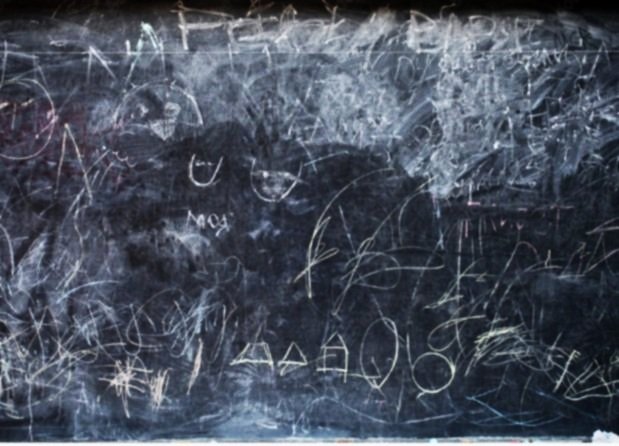
Indwelling Between Antiracist Scholarship and Public Service Lifeworlds: A Reflection
Feisal Kirumira
Ruminations on the intersections between antiracism activist pedagogy, scholarship, and public service require me to first locate myself at a junction between three lifeworlds: the lifeworld of a disrupter, the lifeworld of a repairer, and the lifeworld of a rebuilder. Dionne Brand (2020) describes this phenomenon as “reckoning, repairing, and re-worlding” – a phenomenon whereby we reckon with or hold to account systemically racist systems and practices, amend or repair policies and codes that sustain racial harassment and discrimination, and lastly, collaboratively create new terms and conditions for humanizing and dignified means of relation. That is the roadmap, or as Ted Aoki (1993, p.202) calls it, the curriculum-as-planned, which does not always reflect the real-life experiences of putting this plan into action, or experiencing the curriculum-as-lived.
The purpose of this reflection entry is to make visible, from an antiracism perspective, the nuanced, interwoven, and multilayered connections between the scholarly explorations of an antiracist teacher-educator and a corporate leader’s lived experiential expeditions into the curricular landscape of municipal strategic planning and project design. These interconnections arise from my “stories of difficulty and delight” (Hughes, 2016, p. 246) as a Black-Muslim-Canadian-Muganda spearheading projects to bring about racial equity and justice in academia and public service. Embarking on such disruptive undertakings while Black re-awakens or calls forth in me a transformation of learning or work environments into what Aoki (1993) describes as a “pedagogical situations.” In such a situation, the planned curriculum seamlessly merges with the lived curriculum. Such is outlined in the example below:
Even before day 1 of the term, our teacher, Miss O, walks into her assigned Grade 5 classroom. Because Miss O is already a teacher, she initiates a transformation of a sociocultural and physical environment into something different. Even before a pupil walks in, she silently asks: “Can I establish myself here as a teacher?” and the classroom’s desks, walls, chalkboards, floor, books and resources jointly reply, albeit wordlessly, by what they are. They respond to Miss O’s intention and presence. And when the pupils arrive, things and pupils arrange themselves as it were, around Miss O’s intention. They become suitable, teachable, harmful, difficult, hopeful, damaging. The environment ceases to be an environment, and in its place comes into being a pedagogic situation. Within this situation, Miss O soon finds that her pedagogic situation is a living in tensionality – a tensionality that emerges, in part, from indwelling in a zone between two curriculum worlds of curriculum- as-plan, and curriculum- as-lived experiences. (Aoki, 1993, p. 202)
Similar to the gradual but seamless transformation of things and pupils in Miss O’s classroom into a pedagogical situation of living tensionality, the public safety environments in municipal settings experience a radical transformation from safe working and living environments into toxic situations of tensionality. In other words, these transformations ensue when mediators of workplace power, privilege, and tradition, unintentionally or not, assume the roles of gatekeepers and enforcers of racializing policies, codes, and practices.
Miss O’s students may directly experience the impacts of the colonizing discourse in the pedagogic situation but still be unable to pinpoint the exact source of their discomfort. Similarly Indigenous, Black Diverse racialized employees and citizens in public safety pedagogical situations can accurately narrate their lived experiences of racialization but may not be able to pinpoint all causes of the racializing discourse. This calls for the unraveling of the systemic inequities prevalent in both educational and local government contexts through an emancipatory and systems liberatory approach to decolonization. To decolonize Miss O’s class would require a vertical and lateral disruption of the terms and conditions that sustain Miss O’s entitled assertion of herself as a teacher in alignment with the taken-for-granted role of a teacher. Likewise, the dismantling of systemic racism in municipal enforcement, the justice system, and City service delivery requires a transformative and innovative re-calibration of what constitutes public peace, public order, and public dignity. This must be done in conjunction with the overall planned and lived curriculum of dignified workplace conduct and public behaviour. Through a counterpointed composition of antiracism education, internal and external engagements, collaborative data sharing, and comprehensive policy changes, the public safety stream strives to fulfill the vision of the City of Calgary’s anti-Racism Program, namely, to mitigate and remove systemic racism and racialization in City services and programs.
To this end, I purposefully practice indwelling between the antiracist scholarship and public service curricular landscapes to allow aletheia (Greek, awakening of truth and sincerity) to rejuvenate the newly planted seeds of anti-oppressive education and engagement. In my scholarly writing, I draw from philosophical hermeneutics (Hans George Gadamer, 1975). Hermeneutic writing aims to get you, as a writer, aloft, in order to see what is going on around you.
In my work as the antiracism public safety lead, I strive to get a bird’s eye view of things so as to lay them bare, identify themes, recommendations, and tactical actions. Hermeneutic writing has as its goal the reawakening of life in something that was presumed dead. Does your line of inquiry open up new meanings that were presumed to have been defined once and for all, (in other words, something that was presumed to be dead)? Hermeneutics does not seek to determine the finality of something. It seeks to show how unresolved something is, how temporal something is, and to draw others into the conversation.
Hermeneutic writing does not subjectify lived experience or try to transform lived experience into a finished product, thereby closing opportunities for new ways of seeing and understanding the world as lived. The indeterminate nature of human lived experience means that we cannot always claim that ‘this is how things are,’ especially with reference to racism. This way of determining the state of things is delusional because the state of things is fluid and as such not the final definition of what these things are. Rather, hermeneutic writing tends to the ways things have played out, unfolded, and this state is temporal, finite, and as such always evolving. The hermeneutic goal is to unravel how we got where we are now to understand what is happening to us. To this end, Hans George Gadamer (1975) argues that “understanding begins when something addresses us […] It wouldn't deserve an interest if it didn't have something to teach me that I wouldn't have learnt by myself’ (307).
Hermeneutic interpretation requires us to go back and forth in our analysis of how things have played out because hermeneutics is not a methodology. It is an experientially back and forth theory about how things exist. Everything points to something else, things are universally interrelated and concealed from the human eye, hence the need for a hermeneutic unravelling. We can understand the world as lived based on the myriad of things that lead to the creation of human lived experience. As Gadamer puts it, “every word breaks forth and causes the whole language to resonate because every word is full of hidden, suppressed, silenced, marginalized, and taken for granted meanings” (309).
As an antiracist scholar and public servant, on active duty in pedagogic situations of high tension, I strive to approach my co-conspirators and collaborators inside and outside the corporation with humility and bravery. I seek to boldly ask: Tell me what you need for you to embark and/or continue your journey towards antiracist public safety service delivery. We are all on different points on this journey, but remember, as Miyamoto Musashi says, “There is more than one path to the top of the mountain and think lightly of yourself and deeply of the world” (Musashi, 2012, p. 56).
Works Cited
Aoki, Ted T. (1993). “Legitimating lived curriculum: Towards a curricular landscape of multiplicity.” Journal of Curriculum and Supervision, 8 (3), 255-268.
Gadamer, H. G. (1975). Wahrheit und Methode: Grundzüge einer philosophischen Hermeneutik. Vierte Auflage. Tübingen: Mohr.
Hughes, S. (2016). “On the pedagogy of a folded napkin: Lessons of delight from the observation of children.” In N. Ng-a-Fook, A. Ibrahim, & G. Reis (Eds.), Provoking curriculum studies: Strong poetry and arts of the possible in education (pp. 245-255). New York: Routledge.
Gough, Leo, and Musashi Miyamoto. Miyamoto Musashi’s The Book of Five Rings: A Modern Day Interpretation of a Military Classic. Infinite Ideas, 2009. EBSCOhost, https://search-ebscohostcom.login.ezproxy.library.ualberta.ca/login.aspx?direct=true&db=nlebk&AN=436958&site=ehost-live&scope=site.
Musashi, Miyamoto (2012). The Book of Five Rings. Start Publishing LLC.Kindle Edition.

Feisal Kirumira is the Public Safety Lead, Antiracism Program, Community Services, City of Calgary. Feisal’s training as Adjunct Professor of German/ Humanities Studies coupled with decade-long experience as Faculty Lead, Diversity Working Group in university settings honed his unique skill set as a community broker for sustainable antiracist public safety initiatives. Born and raised in Uganda, Feisal studied and worked in Europe for 13 years before migrating to Canada in 2005 where Calgarians welcomed him and his family as their own. He has lived, studied, and taught diversity, inclusion and antiracism in Germany and Canada. This unique educational, work and lived experiential background equipped Feisal with strategic thinking, leadership and negotiation skills, exceptional cross-cultural communications, case management and advisory experience. Feisal served as Vice-Chair of the City of Edmonton Antiracism Committee and member of the Government of Alberta Antiracism Advisory Council. Feisal has a proven record of building relationships with stakeholders at all levels and catalyzing respectful, inclusive, results-oriented antiracist projects to address public safety concerns arising from systemic exclusion in multi-racial workplace and community environments. Feisal is currently pursuing a PhD in Secondary Education at the University of Alberta with a focus on building capacities for anti-racism education using an Afrocentric lens.
